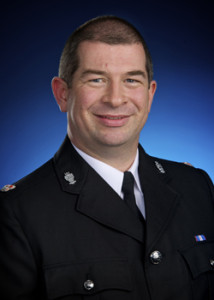 What exactly is in a name? Well, if you’re a member of the Toronto Police Service’s Corporate Communications unit, this became one of the most hotly contested issues of our entire social media strategy.
What exactly is in a name? Well, if you’re a member of the Toronto Police Service’s Corporate Communications unit, this became one of the most hotly contested issues of our entire social media strategy.
One of the more important aspects of our social media strategy was the inclusion of a strong branding component.
Until now, a few officers have driven the Service’s presence on social media. They have had such positive experiences working with various social media tools that the Toronto Police Service is widely seen as a leader in the use of social media among our law enforcement colleagues.
Given these successes, it was not surprising other areas of the Service had been starting to engage in social media use for a variety of reasons. Fortunately, getting people interested in using social media has never been one of our issues.
However, of all the accounts that have been set up, no one ‘looks’ the same. There has been no real consistency to our profiles; nothing that consistently, clearly indicated we were all representatives of the Toronto Police Service.
As a result, with the guidance of @LawsComm, we included an overall branding strategy for the Toronto Police Service-related accounts into our social media strategy. This branding included a creative element designed entirely by Toronto Police Service members led by our Webmaster, Pedja Ljubomirovic.
Speaking of what’s in a name…don’t ever be fooled by someone’s official job title…who knew that staff working in places such as Video Services, Corporate Planning, and Training & Education were really secret-squirrel web designers!?!?!
In addition to the creative element, we wanted each person to follow a naming convention when they created their Twitter profiles. But what should that naming convention be?
And that’s where it got interesting.
An obvious first choice was the person’s rank and name. Or, “TPS and name” for those of us who are civilians with the service and, technically, don’t have a rank. But does rank really mean anything to those not part of the law enforcement community? If you’re not part of this culture, do you really know the difference between a Sergeant and a Staff Inspector? Do you know what the difference is between a Corporal and a Constable? More importantly, do you really care? Probably not, and since the community is our primary audience…we scrapped the idea of including rank.
But, obviously, we were going to stick with “TPS and name”. But what would we do for same names….in an organization of 8,000+ we were more than likely going to end up with more than one Smith or Robertson or Wong? So, we’ll include first names and last names. But the Toronto Police Service is a very culturally diverse service and, as we enter the world of 140 characters or less, perhaps having a naming convention that could effectively take up a third of our allotted characters was a naming convention that needed to be reconsidered.
So, back to the drawing board we went.
In an effort to have a consistent naming convention – which if you’ll remember was the point of our branding strategy to begin with – someone suggested using “TPS and badge number”.
WHAT?!?! And get rid of my precious @mrsmeaghangray?? Do I really have to change to something as impersonal as TPS88631?? How cold. How insincere. How….do I hear myself? Long been known as one of the more cautious proponents of the Service’s social media strategy, I couldn’t believe what I was now advocating for?! Even though I am still a newbie when it comes to social media, I do know that in this techie world personal relationships still matter. And what could be more impersonal than knowing someone by their employee number?
So, you guessed it, back to the drawing board we went.
And then it came to me. What if we let our users create their own names? All of our sites would have the same creative features, the same biographical information, and the same directive to include a real first name and last name anyway, so why don’t we allow them to create their own unique handle?
These people are allowed to carry guns for goodness sake; surely we could expect them to create a professional user name? Now before you think, ‘gee, that’s brave of you’, did I mention that all user names would have to be registered with Corporate Communications anyway? So even if someone tried to be less than professional…they wouldn’t get very far.
Well, there are those who are skeptical of this plan. Some days, even I’m skeptical of our plan but I think we’ve made a wise decision and, so far, our people are proving me right. We’ve had @tpspix, for our Service Photographer, we’ve had @tps911supvr for one of our 9-1-1 call taker supervisors and, my personal favourite, we have @forensicsfella for a member of our Forensics Identification Services.
Has anyone proven me wrong? Perhaps. But, we’re on it. Instead, I’d like to think that we’ve taken a very corporately driven social media strategy with a very corporately driven creative representation and infused a little personal creativity that allows our members to connect with the community they’re trying to reach.
Until next time,
Not @tps88631, but proudly @mrsmeaghangray

Meaghan Gray
Meaghan played a leading role on the Service’s Social Media Working Group. With her colleagues, the Toronto Police Service developed a corporate social media strategy which will expand the way the Service uses these platforms to support communications and community engagement. The strategy involved almost every area of the Service and resulted in policy, guidelines, and training in the use of social media.
Meaghan received her Bachelor of Arts in Political Studies from Queen’s University and her Corporate Communications Certificate from George Brown College.
She can be reached at meaghan.gray@torontopolice.on.ca or @mrsmeaghangray on Twitter.
 Are you on Facebook? What about Twitter? Do you blog?
Are you on Facebook? What about Twitter? Do you blog?











